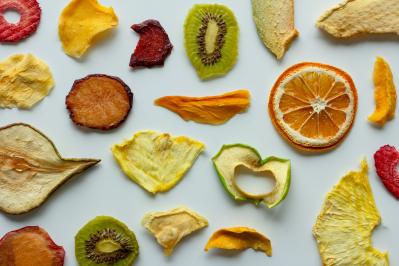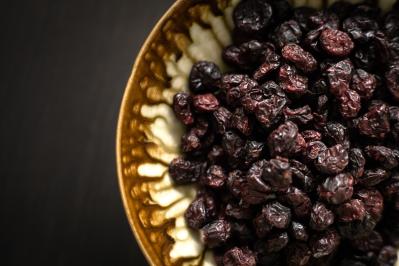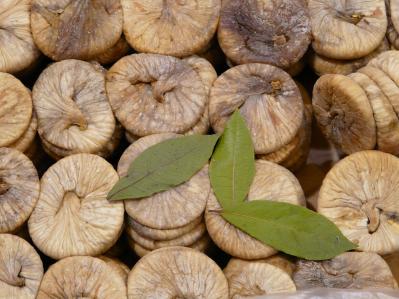
Analysis of dried fruits
Dried fruit is a popular snack that is not only delicious but also rich in nutrients. The fruit is preserved through a gentle drying process and retains most of its valuable ingredients. The most popular types of dried fruit include raisins, apricots, figs, dates, plums and apple and banana chips. Manufacturers are also increasingly offering exotic fruits, such as ananas and papapya, or dried fruit in combination with nuts.
The analysis of dried fruit plays a crucial role in ensuring the quality, optimum product safety and nutritional composition of these products. Analysis in our accredited Tentamus laboratories can also identify potential contaminants. In addition, the analysis also enables the exact determination of the nutrient content to ensure that consumers can enjoy high-quality and healthy dried fruit.
Challenges for producers and distributors of dried fruits
Producers and distributors of dried fruit face various challenges with regard to the quality and safety of their products.
- Contamination & hygiene: One of the biggest challenges is to avoid contamination. Dried fruit can be infested by pests as well as mold or other microorganisms, especially if it is not dried, stored or transported properly. Maintaining strict hygiene standards throughout the production process is therefore crucial to avoid contamination of the dried fruit.
- Residues: Dried fruit can contain residues of pesticides, heavy metals and mycotoxins. These residues can come from various sources, including the use of pesticides during cultivation, contamination of the soil or environment with heavy metals and the growth of molds that can produce mycotoxins.
- Packaging & storage: Another problem is the oxidation of fats in dried fruit, which can lead to a rancid taste and a loss of nutrients. Producers must choose suitable packaging materials to minimize contact with oxygen and preserve the freshness and quality of the dried fruit.
- Nutrients: The ingredients of dried fruit can vary due to natural variations, different growing conditions and drying methods. It is important to conduct regular laboratory analyses to determine the exact content of vitamins, minerals and other nutrients and to label them properly.
- Compliance with regulations: In addition, producers and distributors must also ensure compliance with food regulations and standards. This includes aspects such as labeling regulations, allergen management and product traceability. Sulphur dioxide is often used as a preservative to inhibit the growth of microorganisms and extend the shelf life of dried fruit. However, excessive use of sulphur dioxide can lead to health problems, especially for people with asthma or sensitive respiratory tracts. Accordingly, manufacturers must ensure that the limit values are not exceeded in the production facilities.

Necessary tests for the analysis of dried fruits
Pesticides/residue analysis
The use of pesticides in the dried fruit growing process can lead to residues if the correct safety measures are not taken or if pesticides are used in excessive quantities. It is important that producers follow the recommended use guidelines for pesticides and carry out residue analysis to ensure that legal limits are met.
Heavy metals such as lead, cadmium or mercury can leach into the soil or water and accumulate in plants, including fruit. This can happen naturally due to the nature of the soil or through environmental pollution. Regular checks and analyses are necessary to ensure that the levels of heavy metals in dried fruit are within the legal limits. Another problem here is that drying and removing water concentrates the residues in the dried fruit and limits can be exceeded.
To ensure the quality and safety of dried fruit, it is advisable to carry out regular residue analyses to check for pesticide and heavy metal residues and ensure that the products comply with legal regulations.
Microbiological contamination
During the drying and storage of dried fruit, molds can grow and produce mycotoxins. These toxins can be harmful to health, especially in high concentrations. It is therefore important to check dried fruit for mold infestation and, if necessary, to take appropriate measures to reduce contamination.
This test is routinely carried out in the microbiological laboratories of the Tentamus Group.
Chemical analysis
Various chemical analyses are carried out to measure sulphur dioxide (SO2) in dried fruit. The most common method is titration, in which a certain amount of the dried fruit sample reacts with a solution that reduces the sulphur dioxide. The remaining amount of reactive sulphur dioxide is then measured with a precisely dosed solution to determine the sulphur dioxide content.
In addition, chromatographic methods such as high-performance liquid chromatography (HPLC) can also be used to quantify sulphur dioxide. In HPLC, the sample is separated into its components and the sulphur dioxide is detected and measured using a detector.
The choice of the specific analytical method depends on various factors, including the requirements of legal regulations. In any case, it is important that the analysis of sulphur dioxide in dried fruit is carried out by qualified personnel in an accredited laboratory to ensure accurate and reliable results. We are happy to support you in this.
Sensory testing
Sensory testing of dried fruit involves assessing its organoleptic properties, i.e. its characteristics that can be perceived by the senses, such as appearance, smell, taste and texture. Here are some of the methods used in the sensory examination of dried fruit:
Visual inspection: the external appearance of the dried fruit is examined to detect discoloration, irregularities, mold growth or other visible abnormalities.
Odor test: During the odor test, the aromatic properties are assessed. Aromas should be fresh, characteristic and free of unpleasant odors.
Taste test: This test looks for aspects such as sweetness, acidity, bitterness and any undesirable flavor notes.
Texture analysis: When assessing the texture, criteria such as crispness, toughness, brittleness and consistency are taken into account.
These sensory tests are carried out by trained sensory experts. They help to assess the quality, freshness and sensory properties of your dried fruit and ensure that it meets consumer requirements.
Labeling test
During the labeling test of dried fruit, various aspects are examined to ensure that the information on the packaging is correct and complies with the applicable regulations. This includes:
- List of ingredients
- Nutritional information
- Best before date
- Origin information (certain dried fruits may have protected designations of origin or geographical indications that must be indicated on the packaging)
- Packaging size and weight
- Labeling of special characteristics (special characteristics such as organic, fair trade, gluten-free or other certifications)
Our international labeling team at the Tentamus Group will be happy to support you in checking the labels and labeling of your dried fruit.

Sample shipment for the analysis of dried fruits
Sampling of dried fruits and dried fruit for laboratory testing should be done carefully to ensure representative results. Here are some tips to consider when taking samples:
- Sample selection: the sample should be taken from a representative batch of dried fruit. Our trained staff will be happy to take samples for you and bring them to one of our laboratories.
- Storage and transportation: The samples should be stored and transported in suitable conditions to preserve their quality. Dried fruit should be protected from moisture, direct sunlight, strong temperature fluctuations and other factors that could affect its properties.

Relevant legal bases and directives:
- Commission Regulation (EU) 2023/915 on maximum levels for certain contaminants in food and repealing Regulation
- Regulation (EC) No. 396/2005 of the European Parliament and of the Council (maximum residue levels of pesticides)
- Regulation (EU) No. 1308/2013 of the European Parliament and of the Council
- Commission Implementing Regulation (EU) No. 543/2011
food@tentamus.com
+49 30 206 038 230
Overview of the Tentamus Group laboratories that offer analyses of dried fruit
The following laboratories from the Tentamus Group offer the analyses:
This could also be of interest to you:
- Analyses
Residue analysis
Microbiological analysis
Chemical analysis
Sensory testing
- Product category
Food supplements
Nuts
Cereals
Fruits and vegetables
Marmalade and jam
Fitness food
Legumes
- Other Services